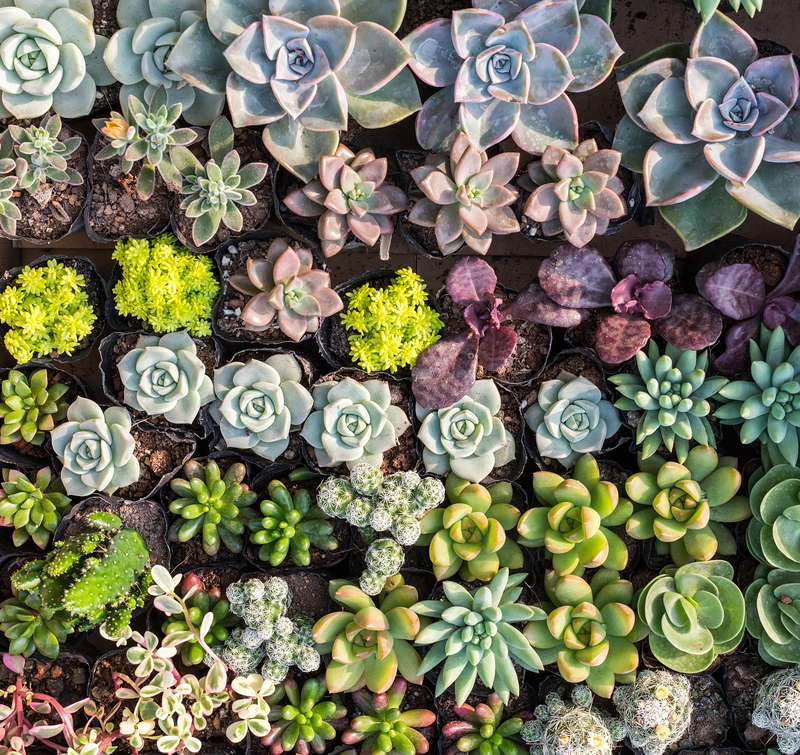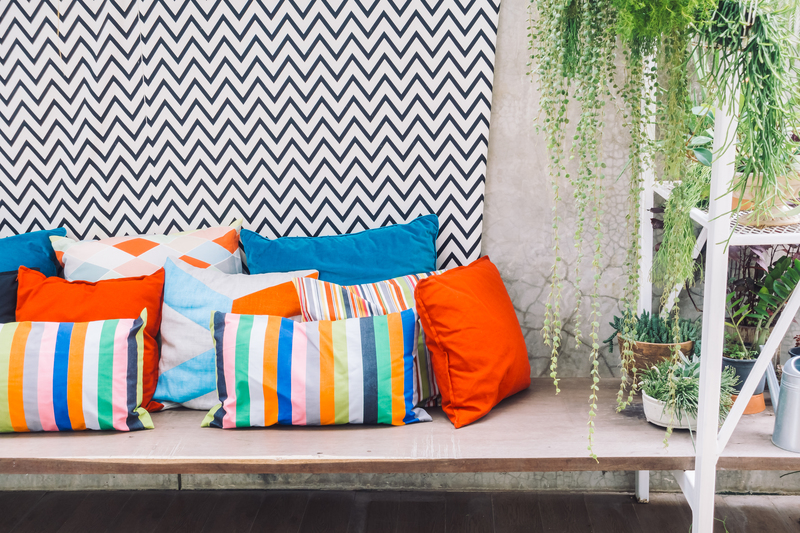Incorporating Play Areas into Your Garden Design
Posted on 11/06/2025
Incorporating Play Areas into Your Garden Design
Designing a beautiful garden that also serves as a haven for children's play is both an art and a science. Today, more families are seeking to make their outdoor spaces enjoyable, practical, and safe for all ages. In this comprehensive guide, we'll explore how you can successfully incorporate play areas into your garden design. From planning and materials to inspiring ideas and practical safety considerations, discover how to create a garden that cultivates both growth and joy.

Why Incorporate Play Zones into Your Outdoor Space?
- Encourages Active Play: Children need space to run, explore, and be imaginative. A dedicated play area in your garden fosters physical activity and creativity.
- Family Engagement: Thoughtfully designed gardens with play spaces invite family members of all generations to spend time outdoors together.
- Enhanced Property Value: A well-integrated play area can add value and appeal to your property, making it a wise investment.
- Safe Outdoor Environment: You control the environment, ensuring your children play safely under your watchful eye.
Key Principles of Child-Friendly Garden Design
When creating play spaces within your garden landscape, blend function with aesthetics for a cohesive, attractive, and playful environment. Here are some guiding principles:
Balance and Harmony
Integrate play areas seamlessly with the rest of your outdoor living space. Instead of sectioning off a "play zone," use landscaping features, paths, and plantings to invite children's activities as a natural part of your garden.
Safety Comes First
- Use non-toxic materials and plants: Choose robust, non-toxic plants for borders and avoid species with sharp thorns or irritants.
- Soft ground cover: Install mulch, grass, or specialist rubber surfacing beneath equipment to cushion falls.
- Visibility: Plan play areas where you can supervise children easily from the house or patio.
Inclusivity and Age-Appropriateness
An effective playground space in your garden design caters to different ages, interests, and abilities. Incorporate elements such as sand pits for toddlers, adventure trails for older kids, and quiet corners for reading or nature observation.
Planning Your Garden Play Area
Assessing Your Space
Before building, evaluate your garden's size, shape, and sunlight exposure. Take note of level ground for play equipment, natural shade from trees, and access paths. Good planning ensures the space is both functional and beautiful.
Choosing the Right Location
- Safety and supervision: Locate play zones within clear sight lines of main living areas.
- Sun and shade: Balance sunny spots with shaded rest or activity areas to protect children from excessive sun exposure.
- Noise and privacy: Consider proximity to neighbors and main outdoor entertaining spaces for harmonious garden use.
Size and Scale
Ensure play structures are proportionate to your garden. Maxi-sized playgrounds can overwhelm smaller gardens, while minimal installations may not provide enough engagement in expansive landscapes.
Creative Ideas for Integrating Play Spaces
Natural Adventure Zones
- Logs and boulders: Use natural stone, logs, and tree stumps for climbing, balancing, and imaginative play.
- Living willow dens: Weave fast-growing willow into tunnels or domes, creating hideaways that blend into your landscape.
- Wildflower meadows: Section part of your garden for wildflowers, inviting pollinators and inspiring children to explore nature.
Traditional Playground Equipment with a Modern Twist
- Swings: Hang classic rope swings from sturdy trees or purpose-built frames, using modern materials for durability.
- Climbing frames and treehouses: Integrate timber climbing structures or treehouses painted to match your garden's color scheme.
- Slides and zip lines: Low-profile slides can be built into grassy mounds for a seamless look, while short zip lines add adventure for older children.
Creative and Educational Play Spaces
- Outdoor chalkboards: Attach chalkboards to fences or exterior walls for drawing and learning outside.
- Mud kitchens: Use repurposed sinks or wooden counters to encourage sensory, messy play--essential for early childhood development.
- Outdoor musical instruments: Set up DIY percussion walls, xylophones, or wind chimes using metal, wood, and recycled materials.
Blending Play Zones with Stylish Garden Landscaping
Natural Materials and Colors
When incorporating play features into your garden design, choose materials that complement your garden's aesthetic. Timber, stone, and woven willow age beautifully and anchor play spaces within a natural setting. Use earthy or pastel tones that blend subtly with plants and architecture.
Garden Paths and Secret Trails
Winding paths entice children to explore and guide movement between activity areas. Consider:
- Gravel or bark mulch paths that are soft underfoot
- Stepping stones and mosaic trails for visual interest
- Plant tunnels or living archways covered in climbing plants
Planting for Play
- Sensory beds: Incorporate textured leaves, fragrant herbs, and colorful blooms for children to touch, smell, and observe.
- Fruit and vegetable gardens: Teach children about nature and healthy eating by letting them help plant and harvest produce.
- Seasonal appeal: Choose a variety of plants to ensure year-round interest and continuous learning opportunities.
Multi-Functional Spaces
Design play areas that can adapt as children grow. A sandpit, for example, can be converted into a raised planter or seating area in future years. Removable or modular equipment makes it easy to update the garden as family needs change.
Safety and Practical Considerations
Surfacing Choices
Safe, forgiving surfaces beneath play equipment are essential. Options include:
- Natural grass (low cost but can become muddy and uneven with heavy use)
- Bark chips or wood mulch (good cushioning, needs regular topping up)
- Rubberized safety tiles (excellent impact absorption, available in natural colors)
Ensure drainage is adequate to prevent pooling water and slippery surfaces.
Boundaries and Fencing
Define play areas using natural hedges, low fences, or planting to help children understand their boundaries without creating a fortress. Secure boundaries also keep pets and wildlife out, maintaining hygiene and safety.
Sun Protection
Install pergolas, retractable sails, or use established trees to provide ample shade during summer playtimes. Dappled light is preferable to deep shade for all-day usability.
Environmental and Lifestyle Benefits
Encouraging Outdoor Learning
Outdoor play spaces are not just for recreation--they're essential for learning and development. Children develop physical coordination, scientific understanding, and social skills through interaction with the natural world and peers.
Sustainable and Eco-Friendly Design
Opt for sustainably sourced wood, recycled materials for play equipment, and permeable surfaces that aid rainwater management. Enhance biodiversity by planting native species, installing bug hotels, or creating mini ponds.
Integrating Play with Adult Spaces
Connecting Zones with Pathways
Link child-friendly play zones with patios, decks, or outdoor dining areas via attractive paths, ensuring the whole family can move freely around the garden. This layout makes it easy to supervise and encourages togetherness.
Flexible Furniture and Shared Use
Choose durable, weatherproof seating that doubles as storage for toys or books. Picnic tables, hammocks, and benches encourage both structured and free play, as well as family gatherings.
Top Tips for a Successful Play-Friendly Garden
- Involve Children in Planning: Let kids help choose features, colors, or even plants for their special spots.
- Keep it Evolving: Regularly update the space to suit children's changing interests and ages.
- Choose Long-Lasting Materials: Invest in robust structures that withstand weather and wear.
- Mix Play and Nature: Balance equipment with natural experiences like digging, planting, and wildlife watching.

Inspiring Examples of Gardens with Play Areas
- City Gardens: Utilize vertical space with hanging swings, rooftop sandpits, or wall-mounted musical features.
- Cottage Gardens: Integrate willow tunnels, fairy treehouses, and wildflower lawns for a storybook feel.
- Modern Landscapes: Use geometric paths, minimal equipment, and neutral-tone surfaces for a sleek, contemporary look.
Conclusion: Designing Gardens for Joy and Growth
Incorporating play areas into your garden design is a rewarding way to create a safe and beautiful outdoor environment for the whole family. With thoughtful planning, you can successfully blend aesthetics and purposeful play, ensuring your garden remains a place of wonder, relaxation, and activity for many years.
Whether you have a sprawling lawn or a compact urban garden, there are countless ways to tailor your outdoor spaces to encourage play, creativity, and lifelong family memories. Start today by observing your garden with fresh eyes--imagine its potential, layer in playful details, and watch as your landscape flourishes with laughter and discovery.
Frequently Asked Questions on Garden Play Spaces
- Q: What is the best surface for play areas in a garden?
A: Rubber surfacing provides the best impact absorption, but combinations of bark mulch, grass, and specialist safety tiles also work well depending on your budget and visual preferences. - Q: How can I make my garden play area safe for my children?
A: Use non-toxic materials and plants, provide soft surfacing, keep equipment well-maintained, and always supervise young children during play. - Q: Can small gardens support outdoor play areas?
A: Absolutely! Creative use of vertical features, multi-functional spaces, and portable equipment can turn even the smallest garden into a playful retreat.
Ready to transform your garden? Start planning your play-friendly garden design today and create a sanctuary where everyone in the family can thrive, learn, and play--right outside your back door.

